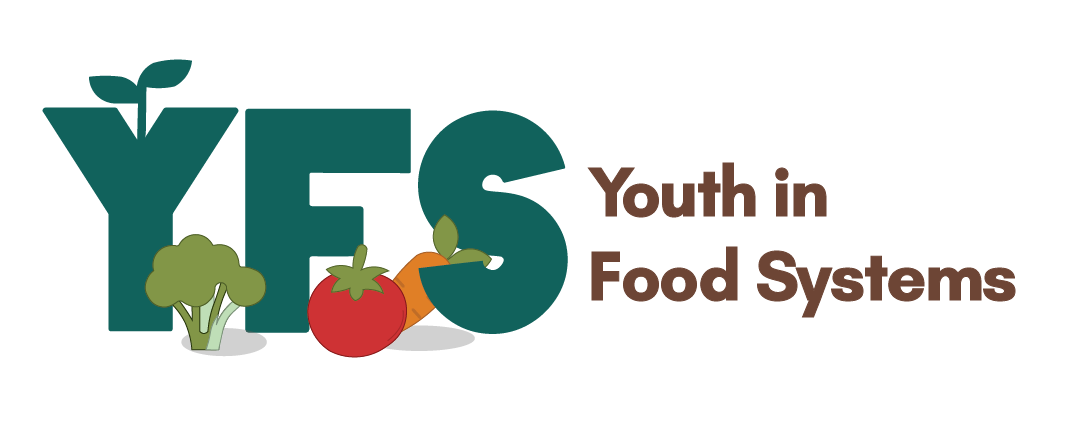Written by: Soham Parmar
Edited by: Liam Statham
Designed by: Jedrick Asuncion
Published by: Rayna Almas
Apple pie, chocolate chip cookies, and brownies – we all love these classic desserts. But have you ever thought about stepping outside your comfort zone and tasting a new dessert? Imagine biting into a creamy italian tiramisu, a chewy japanese mochi, or a warm slice of turkish baklava dripping with honey. Every country has its own sweet masterpiece waiting to be discovered. So, why not let your taste buds travel the world? Here are seven iconic desserts from around the globe that will make your dessert dreams come true.
Gulab Jamun – India
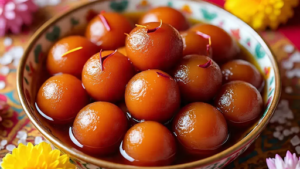
Gulab Jamun is one of India’s most beloved desserts. They are considered an icon among Indian sweets and hold a special place in the hearts of Indians. They’re soft golden balls made from milk solids (called khoya) or milk powder. They’re deep fried until perfectly brown and then soaked in a warm sugar syrup flavoured with rose water and cardamom. The word “Gulab” means “rose” in Hindi and the word “Jamun” means “java plum.” It can be enjoyed on its own, slightly warm, or served with a scoop of vanilla ice cream for an extra treat. Whether it’s during Diwali, a wedding feast, or just as a dessert after dinner, Gulab Jamun is a dessert that brings people together and adds a touch of sweetness to every occasion.
Tiramisu – Italy
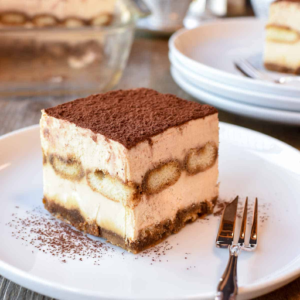
Tiramisu is a creamy Italian dessert that has layers of coffee-soaked ladyfingers (a biscuit), rich mascarpone cheese, and a dusting of cocoa powder on top. Tiramisu is confused by some to be a cake, but traditional tiramisu isn’t baked- it’s a chilled layer treat that melts in your mouth. The name tiramisu literally means “lift me up” in Italian, referring to both its energizing coffee flavor and its uplifting sweetness. Often enjoyed as the grand finale of an Italian meal, tiramisu is beloved for its perfect balance of coffee, cream, and delicate sweetness.
Apfelkuchen – Germany
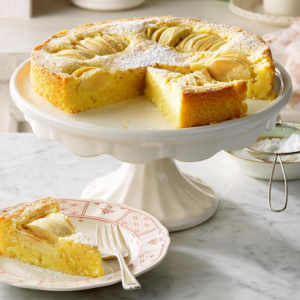
Apfelkuchen is a classic German apple cake that’s both simple and comforting. It’s typically made with a soft, buttery cake base topped with thinly sliced apples, a sprinkle of sugar, and sometimes cinnamon, baked until golden and slightly caramelized. Apfelkuchen translates simply to apple cake. It is often served with a dusting of powdered sugar or a dollop of whipped cream. Perfect for afternoon tea or a cozy family gathering, it’s a simple yet delicious way to enjoy Germany’s love of apples and baking traditions.
Baklava – Turkey
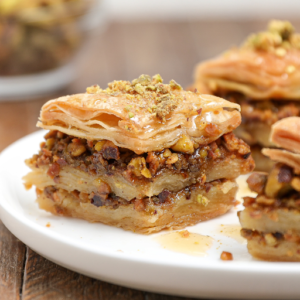
Baklava is a rich, flaky pastry that has been a symbol of celebration in the Middle East and Mediterranean cultures for centuries. The word baklava is thought to come from Turkish origins, and the dessert itself is believed to have been perfected in the royal kitchens of the Ottoman Empire. It’s made by layering sheets of thin filo pastry with chopped nuts (usually pistachios or walnuts) and then soaking it in sweet syrup or honey once baked. The result is a crisp, golden treat that’s both crunchy and syrupy. Baklava is often served during holidays and family gatherings, especially around Eid and other festive occasions. Paired with Turkish tea or coffee, it offers a perfect balance of sweetness and texture that makes every bite feel luxurious.
Mochi – Japan
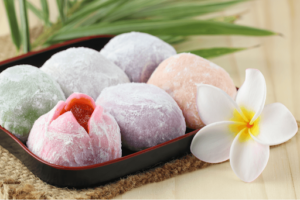
Mochi is a traditional Japanese dessert which is a rice cake made from a sweet glutinous rice called mochigome that is steamed, pounded into a smooth, stretchy rice dough with a soft, chewy texture and then molded into different shapes. The word mochi comes from the Japanese term meaning “to hold” or “to have,” symbolizing good fortune and prosperity. This beloved treat has been part of Japanese culture for centuries and is especially enjoyed during the New Year celebration, when families come together to make it in a ritual called mochitsuki. Some sweet mochi confections contain fillings such as bean paste, ice cream or fresh fruit. Its gentle sweetness and unique texture make it a comforting treat that beautifully blends simplicity, tradition, and flavour in every bite.
Nanaimo Bars – Canada

Nanaimo Bars are a rich, no-bake dessert bar that originated in the city of Nanaimo, British Columbia, Canada. It traditionally consists of 3 layers: a crunchy, chocolatey base made with graham cracker crumbs and coconut, a custard-flavoured butter icing in the middle, and a chocolate ganache on top. In 2006, the Nanaimo bar was declared Canada’s favourite confection by a reader’s poll in the National Post. The combination of textures, crisp, creamy, and silky, makes every bite unforgettable.
Crème Brûlée – France
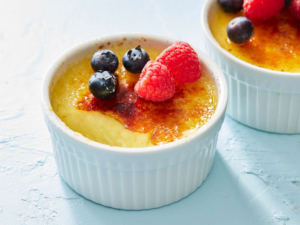
Creme brûlée is a classic French dessert whose name translates to “burnt cream.” It’s made with a smooth, creamy vanilla custard base with a thin layer of caramelized sugar. The base is made from cream, egg yolks, sugar, and vanilla, baked gently until silky smooth. Once chilled, a spoonful of sugar is sprinkled on top and then melted using a kitchen torch creating that signature crisp, golden crust that cracks when tapped with a spoon. This treat dates back to the 17th century and is often served in small ramekins , making it as refined as indulgent.
Bibliography:
10 Desi Desserts You Can Try Making at Home. (2024, July 28). Aashirvaad. https://aashirvaad.com/blogs/10-best-indian-sweets.html#:~:text=Gulab%20Jamun,staple%20on%20every%20festive%20menu.
What Is Tiramisu? (2023, October 17). Food Network. https://www.foodnetwork.com/how-to/packages/food-network-essentials/what-is-tiramisu
What Is Baklava? (2023, October 2). Food Network. https://www.foodnetwork.com/how-to/packages/food-network-essentials/what-is-baklava
Food Network Kitchen. (2023, September 28). What Is Mochi? Food Network. https://www.foodnetwork.com/how-to/packages/food-network-essentials/what-is-mochi
Dunne, B. (2019, February 7). Nanaimo Bar. Thecanadianencyclopedia.ca. https://thecanadianencyclopedia.ca/en/article/nanaimo-bar
